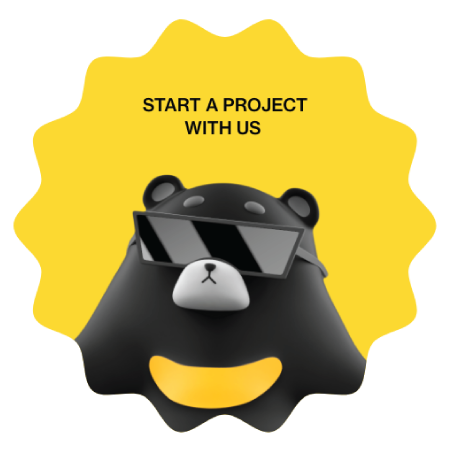The development of websites is now an essential component of the modern digital landscape. Websites are now the primary source of information and communication for individuals and businesses alike, from e-commerce to social media platforms. Web improvement is the most common way of making intuitive sites with an emphasis on client experience. To create websites that are both functional and user-friendly, it requires a combination of design, coding, and various web technologies.
We will provide you with the fundamental knowledge and abilities you need to get started in this exciting field in this beginner's guide to web development. We will cover the rudiments of web improvement, including the various sorts of advancement, fundamental web innovations and dialects, arranging and planning your site, fostering your site, back-end improvement and information base mix, testing and arrangement, and that's just the beginning. You will have a solid understanding of web development at the end of this article and be prepared to begin your journey into web development.
Understanding the Basics of Web Development
Web development can be broken down into three main categories: full-stack, back-end, and front-end development The focus of front-end development is on the user experience and interface, as well as the design, layout, and functionality of the website. The server-side of the website, which includes the information base, server, and application rationale, is the focus of back-end development. Full-stack improvement is a more thorough way to deal with web improvement since it consolidates both front-end and back-end advancement.
You must be proficient in a number of essential web technologies and programming languages to become a web developer. HTML (Hypertext Markup Language) is the programming language used to build a website's structure. A site is styled and spread out with the assistance of CSS (Flowing Templates). A site's usefulness and intuitiveness can be improved with JavaScript. In addition, you should become familiar with a server-side programming language like PHP, Ruby, or Python in order to incorporate information bases into your website and create dynamic pages. To assist you with coding all the more successfully, you'll have to figure out how to utilize web advancement apparatuses like adaptation control, improvement structures, and content managers.
Planning and Designing Your Website
Identifying your website's audience and purpose is the first step in designing and planning. This will help you determine the elements and content your website needs to address the issues of your audience. In the wake of deciding your ideal interest group, you can plan the wireframe and mockup for your site. A basic layout known as a wireframe shows your website's organization and structure. A mockup configuration is a visual portrayal of your site that incorporates the variety plan, typography, and other plan components.
You can choose a font and color scheme for your website after making a wireframe and mockup design. With the assistance of this, you will be able to develop a website design that is both consistent and cohesive. When choosing a variety, think about the brain science of variety and what it can mean for your audience. Your website's user-friendliness and clarity may be affected by your typography, so it's important to consider it. You should choose a font that matches the overall design of your website and is simple to read. You can create a website that works and looks good if you take the time to plan and design it.
Developing Your Website
Establishing a development environment is the first step in building your website. Installing a web browser, such as Google Chrome or Mozilla Firefox, and a text editor, such as Sublime Text or Visual Studio Code, are necessary for this. Additionally, you will need to install a framework for web development, such as Foundation or Bootstrap, in order to create responsive and mobile-friendly websites.
You can begin writing semantic HTML once your development environment is set up. Using HTML tags like header>, nav>, section>, and footer>, you can create your website's structure. Because this makes your website more accessible to users and enhances its search engine optimization (SEO), it is essential to write clean and semantic HTML.
CSS can be used to style your website after creating its structure. Colors, fonts, backgrounds, and other visual elements can be added to your website using CSS. You can utilize CSS structures, like Bootstrap or Establishment, to make a responsive and versatile plan. Finally, you can use JavaScript to make your website interactive. You can make your website more engaging for users by adding animations, effects, and other interactive elements using JavaScript.
Back-end Development and Database Integration
You will need to select a server-side programming language, such as PHP, Ruby, or Python, before you can begin back-end development. You will also need to set up a server environment that can handle HTTP requests and responses, such as Apache or Nginx. To reduce development time and simplify the back-end development process, you can use a web application framework like Django or Laravel.
Whenever you have set up your back-end improvement climate, you can begin incorporating an information base into your site. You can utilize an information base administration framework, like MySQL or PostgreSQL, to make and deal with your data set. You can then utilize a data set interface, like SQL or ORM (Item Social Planning), to connect with your data set and recover or store information progressively. Integration of databases is crucial because it enables the development of dynamic and interactive websites like e-commerce, social networking, and content management systems.
In conclusion, database integration and back-end development are crucial components of dynamic and interactive websites. You can create a powerful and scalable website that meets your audience's needs by selecting a server-side programming language, setting up a server environment, and integrating a database into your website.
Testing and Deployment
The most crucial stage of site testing is conducting a usefulness test, which involves testing every aspect of your website. Testing interactive elements like buttons, forms, and links is one way to make sure they work as intended. In addition, you should conduct a similarity test, which entails testing your website on a variety of software, devices, and operating systems to ensure that it functions flawlessly on all of them.
After testing it, you can send your website to a web server. You will need to upload your website's files to a web hosting service like Bluehost or Amazon Web Services in order to accomplish this. Your site ought to likewise utilize two-factor validation and other safety efforts like secret word security to protect it.
Last but not least, you should keep an eye on and take care of your website to keep it safe and useful. This includes performing regular backups, upgrading plugins and software, and monitoring your website for threats and security flaws.
In conclusion, web development relies heavily on testing and deployment. By routinely checking and keeping up with your site, conveying it to a protected web server, and testing it for similarity and usefulness, you can guarantee that your crowd can get to it.
The making of intuitive and drawing in sites for a worldwide crowd is the thrilling and consistently developing field of web improvement. Whether you are a novice or an experienced developer, you can get started with web development with a variety of tools and resources. You can effectively design, plan, create, test, and convey your site in the event that you follow the means in this aid.
Remember that web development is a journey, not a destination. New tools, strategies, and innovations that can help you create sites that are significantly more remarkable and dynamic will become available to you as you gain insight. Along these lines, don't quit fabricating, testing, or learning! With perseverance and enthusiasm, you can become a skilled web developer who achieves success.







